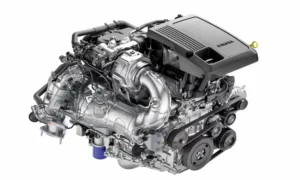If your check engine light is on and you’ve been hit with the P0191 code, you’re probably wondering what to do next. The P0191 code indicates an issue with the fuel rail pressure sensor, which means your truck’s fuel pressure isn’t where it should be. This guide will help you diagnose the problem and get your Duramax running smoothly again. Stick around, as the solution to your problem might be simpler than you think.
Symptoms Associated With P0191
The P0191 code can cause various symptoms that affect your Duramax engine’s performance and your overall driving experience. Notable issues include changes in idling, stalling, fuel economy, and acceleration.
Engine Performance Issues
When the P0191 code is triggered, one of the main symptoms you may observe is rough idling. Your engine may feel unstable and oscillate between different RPMs. This is often due to erratic fuel pressure, which affects the engine’s ability to maintain a steady idle.
Another notable symptom is stalling. You might find that your engine unexpectedly shuts off, especially when coming to a stop or during low-speed maneuvers. This is a significant concern for safety and reliability.
Acceleration problems are also common. You may experience hesitation or poor throttle response when trying to speed up. This happens because the fuel delivery to the engine is inconsistent, hampering its ability to react to acceleration demands.
Limp mode could be activated as a protective measure. This mode reduces the engine’s performance to limit damage and make it safe to drive to a repair shop.
Changes in Driving Experience
You may notice a considerable decrease in fuel economy. The erratic fuel pressure results in inefficient combustion, causing your engine to consume more fuel than usual. This means more frequent trips to the gas station and higher running costs.
Engine load issues might become apparent. When the fuel rail pressure is unstable, the engine struggles to handle heavy loads or uphill driving, making the vehicle feel underpowered.
Your overall driving experience will suffer due to these symptoms. From stalling at inconvenient moments to feeling a lack of power when you need it most, the P0191 code impacts various aspects of your time on the road, making timely diagnosis and repair essential for a smooth driving experience.
Potential Causes of P0191 in Duramax
Understanding the leading causes behind the P0191 code in Duramax can help you diagnose and fix the issue faster. This code often relates to problems with the fuel pressure sensor, the fuel system components, and electrical or calibration issues.
Problems With the Fuel Pressure Sensor
A faulty fuel pressure sensor is a common cause of the P0191 code. The sensor might fail to provide accurate data to the Engine Control Module (ECM). This could be due to contaminants that clog the sensor or simply an aged, worn-out sensor.
It’s crucial to check for any visible damage or corrosion on the sensor. Small leaks can also affect sensor performance. Replacing a damaged sensor often resolves the issue. Maintaining regular inspections can prevent such failures.
Fuel System Components
Issues in the broader fuel system can also trigger the P0191 code. The fuel filter, for example, might be clogged, which can reduce the fuel flow to the engine. Similarly, a weak fuel pump can fail to deliver the required pressure, resulting in this error.
Leaks in the fuel lines or around the fuel pressure regulator can also cause the ECM to register incorrect pressure levels. Check these components thoroughly if you encounter the P0191 code. Cleaning or replacing them can often resolve the problem.
Electrical and Calibration Issues
Electrical problems like wiring issues or poor sensor calibration are another potential cause. Damaged wires or connectors can interrupt the signal between the fuel pressure sensor and the ECM. Additionally, incorrect sensor calibration after a repair or replacement can lead to faults.
You should inspect the wiring harness and connectors for any visible signs of wear or damage. Proper calibration of the sensor according to the manufacturer’s specifications is crucial for accurate readings. Addressing these issues can help you clear the P0191 code effectively.
Fixing the P0191 Code
Fixing the P0191 code usually involves replacing faulty components, conducting thorough maintenance of the fuel system, and ensuring all sensors are properly calibrated after repairs. This code is often linked to issues with fuel pressure sensors, regulators, and the lift pump.
Replacing the Faulty Components
When the P0191 code appears, one common fix is to replace the fuel pressure sensor. This part costs between $60-$100 and can be installed by a professional if you’re not comfortable doing it yourself.
Other parts you might need to check include the pressure regulator and the fuel filter housing. If these are faulty, they can lead to erratic readings and poor fuel efficiency. Regularly inspect these components and replace any that are defective to maintain optimal performance.
Fuel System Maintenance
Maintaining the entire fuel system is important to prevent the P0191 code from recurring. Start by inspecting the fuel filter housing for any signs of wear or clogs.
Replacing the fuel filter at regular intervals can prevent contaminants from affecting the fuel rail pressure sensor and fuel pump. Check the lift pump pressure to ensure it’s within the specified range. A weak lift pump can cause low fuel pressure, triggering the P0191 code.
Calibration of Sensors After Repairs
After replacing any faulty components, it’s important to calibrate the sensors. This ensures accurate readings and efficient engine performance.
For the fuel pressure sensor and fuel rail pressure sensor, use a diagnostic tool to reset and calibrate them according to the manufacturer’s guidelines. Incorrect calibration can still cause the engine to misinterpret fuel pressures, leading to the P0191 code reappearing.
A proper calibration helps maintain fuel efficiency and prevents the engine from running lean or rich. Always double-check the settings and make any necessary adjustments to avoid further issues.
Advanced Tips for Duramax Owners
For Duramax owners looking to get the most out of their engine, it’s important to focus on performance tuning and keeping an eye on important metrics. This section covers useful tools and methods to improve and monitor your Duramax engine’s performance.
Performance Tuning and Sensors
Tuning your Duramax can enhance its performance significantly. Tuners like the Derringer can adjust the engine’s parameters to boost horsepower and torque. This helps in improving throttle response and fuel efficiency.
Regularly inspect key sensors, such as the Map Sensor and Fuel Pressure sensor, to ensure accurate data for the Engine Control Module (ECM). The CTS (Color Touch Screen) monitors are great for real-time feedback. Incorrect data can lead to performance issues.
Check the LH Fuel Rail pressure regularly. A faulty fuel rail pressure sensor can trigger codes like P0191, causing reduced engine power. Monitoring this can help avoid unexpected breakdowns.
For better throttle control, upgrade your Throttle Body. It can improve air intake efficiency, leading to better combustion and performance.
Monitoring Tools and Devices
Proper monitoring tools can give you real-time data about your engine’s health. The iDash is a versatile device that displays critical engine information, including fuel rail pressure, engine load, and sensor data. It helps you catch potential issues early.
For a more detailed analysis, consider using a combination of devices. A manual pressure gauge can verify readings from electronic sensors, while advanced tuning devices can help you diagnose and fix issues yourself.
Having these tools and devices ensures you are always in control, and it helps prevent engine damage. Real-time monitoring and proper tuning can extend the life of your Duramax engine while enhancing its performance.















